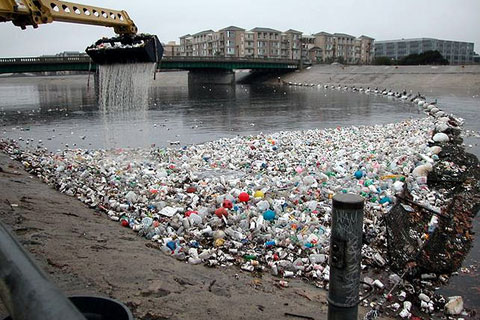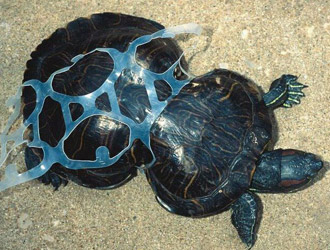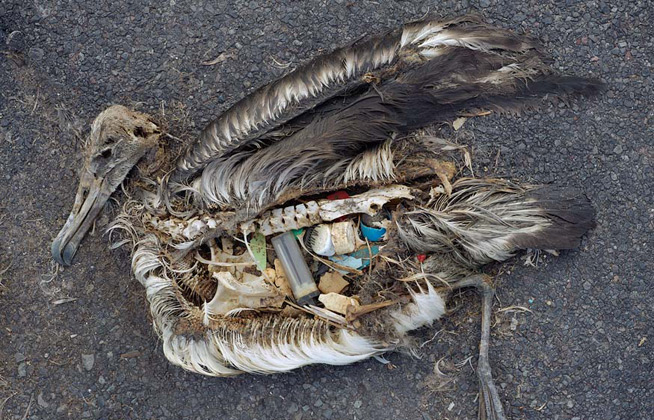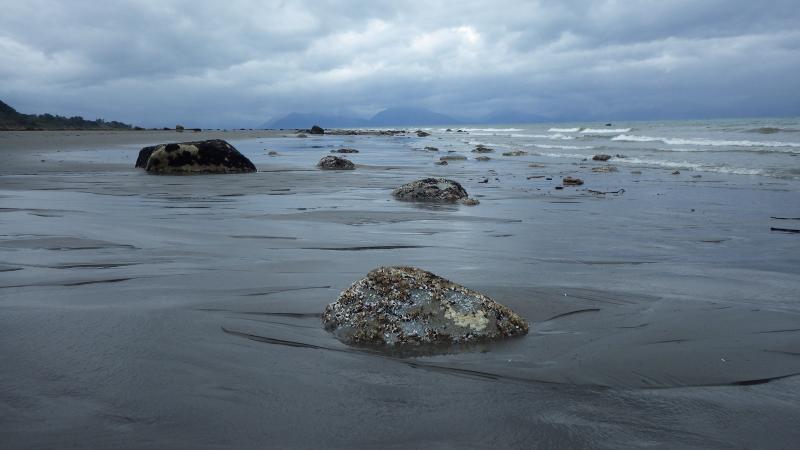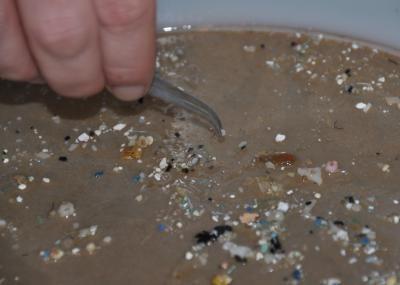Home>Let It Flow
PLASTIC PERDITION
It seems I only get inspired to write this blog, which is supposed to be about local water quality issues, when I am travelling somewhere far away. Such was the case on my recent trip to Alaska. One of the 1st things we did upon arriving in Alaska was visit the Anchorage Museum. I was expecting to learn about Eskimo life, maybe a little flora and fauna of Alaska. Instead, I saw a fascinating exhibit entitled,” Gyre: The Plastic Ocean” all about, you guessed it, plastic in the ocean. In the Pacific Ocean, there is a giant circulating current called a gyre where huge masses of plastic accumulate. A disproportionate amount of this plastic garbage then washes up on the otherwise pristine coast of Alaska and this exhibit was a thought provoking amalgam of science, art and education about this problem.
Plastic is a recent invention only coming into wide spread usage since WW II. We absolutely love the stuff and use a ton of it: 280 million tons to be exact in 2011 alone. Guess what? Of the 1 billion tons of plastic produced since the 1950’s, it is estimated that nearly all of it is still in the environment somewhere. This is because it doesn’t break-down, at least not in any time frame that is relevant to human beings. Where does all of this plastic go? Some of it will go into landfills where it will be a problem some day for our post WALL-E descendants. But often, plastic blows into a ditch, which runs into a stream, then into a river, and finally ends up in the ocean. As much as 10% of the plastic we use ends up in the ocean. According to the Ocean Conservancy, there are 46,000 pieces of floating plastic for every square mile of ocean.
Lots of things are made of plastic, but for shear enormity, it is hard to beat plain old plastic grocery bags. According to one statistic I saw, 1 trillion plastic bags are produced every year. In the U.S. alone, 100 billion a year are used. And do you know what a floating plastic bag looks like to a sea turtle? A tasty jelly-fish. So the sea turtles eat floating plastic bags which then get wrapped around their intestines and the turtles slowly, but eventually starve to death. All because you were too lazy to walk out to your car and get the re-usable cloth grocery bag that your kids gave you for Christmas. As an aside, I always like shopping at grocery stores in Europe which make you pay if you want to use plastic bags.
Here is another gruesome visual from the exhibit for you: a seal pup with its head stuck inside the plastic rings that a six-pack comes in. Apparently, it happens all the time to marine animals and birds. Speaking of birds, there was a photo of an autopsy of a sea bird showing the wide variety of plastic items found inside the bird’s stomach. When I got home and started writing this blog, I couldn’t find my notes about this, so I Googled it and eventually got to a Youtube video called “Albatross Necroscopy.” In amazement, I watched a young woman pull a never ending stream of junk out of a dead Laysan Albatross. The eventual total was 5 plastic bottle caps, 1 strip of canvas, 1 wire brush, 4 feet of monofilament fishing line, 1 pen cap, 1 plastic spacer used in the oyster industry and 2 handfuls of miscellaneous plastic. The wonder is not that the bird died but that it was able to fly at all with this flea-market of plastic in its gut.
The exhibit also included some very compelling video of visits to remote Alaskan beaches, places only accessible by multi-day boat excursion. And what did the researchers and artists find as they scrambled from their landing craft onto these wilderness beaches that may go years without any human footprints? Large quantities of plastic garbage washed ashore. On a single 4 mile stretch of beach in Katmai N.P., four tons of plastic were collected and hauled aboard the boat. Of course the purpose of the expedition was not to single handedly clean up every stretch of coastline in Alaska. Rather, by transporting artists to these remote places, they were able to see for themselves how a pristine wilderness can be violated by the garbage of our consumer society no matter how many thousands of miles of ocean lie in between. The artists were inspired in different ways by this incongruity: some visually depicting the trash in various media, others using the plastic flotsam and jetsam in their creations.
Although you may be growing weary, I am not quite done with plastic yet, because, believe me, it is not done with us. Most of us have heard news reports of the problems associated with chemicals leaching out of plastic. One bad one was biphenyl A, which is why my backpacking water bottles are now BPA free. But chemicals are not the only health threat from plastic. Turns out that while plastic never bio-degrades completely, it does get smaller. So, after some number of years or decades, it is reduced in size to small beads called micro-plastics. These are about the size of fish eggs and are readily gobbled up by tiny animals which eat tiny things. Since the micro- plastics will not break down any further until the coming of the Apocalypse {I am told this should be capitalized}, the stuff builds up in the system of the tiny animal, and then in the system of the slightly larger animal that eats the tiny animal, and then in the slightly larger animal that eats…O.K. you probably get the point. A substance that has only been in existence for some 60 years and that we do not completely understand is working its way up the food chain. And while we are discussing micro-plastics, did you know that they are now in many consumer cosmetic products, INCLUDING TOOTHPASTE!
A rant about plastic is never complete without a mention of the most idiotic- yet ubiquitous- plastic product of all. I am talking about single use disposable water bottles. Fifty billion bottles of water are sold around the world every year, and of this total an amazing 30 billion per year are sold in the U.S. I find this extraordinary when you consider that our municipal water systems in this country are the envy of most of the world. The fact that almost every American can get the exact same quality water for free from his/her own tap does not deter us from paying over one dollar per bottle for mere convenience. Is it really that much harder to fill up a reusable water bottle at your tap than drive to a giant box store, buy a carton of 36, and store them on top of your dryer? You could just laugh this off as a silly American foible if there wasn’t such an enormous carbon footprint. The production of plastic requires oil; one statistic I saw said 5% of worldwide oil production goes straight into the manufacture of plastic. But it doesn’t end there, because after these plastic bottles are manufactured and filled with water {ironically, sometimes tap water}, they are then transported hundreds, sometimes thousands of miles. Even further for a bottled water called, ”Fiji Water.” Could anything be more ludicrous then using fossil fuels to make plastic bottles filled with tap water and then transport them half-way around the planet?
Let me leave you with one final visual image, courtesy of Mr. Norm Schriever of the Huffington Post. Hold up that disposable plastic water bottle and take a good look. Now imagine that bottle one quarter filled with oil… that is how much fossil fuel is required to manufacture and distribute it. Bon Appetit!
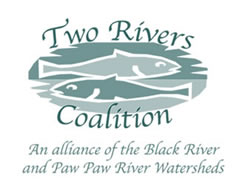
![Crabapple Pond [Click here to view full size picture] Crabapple Pond [Click here to view full size picture]](media/pages/tn_crabapple_pond_740x192.jpg)
